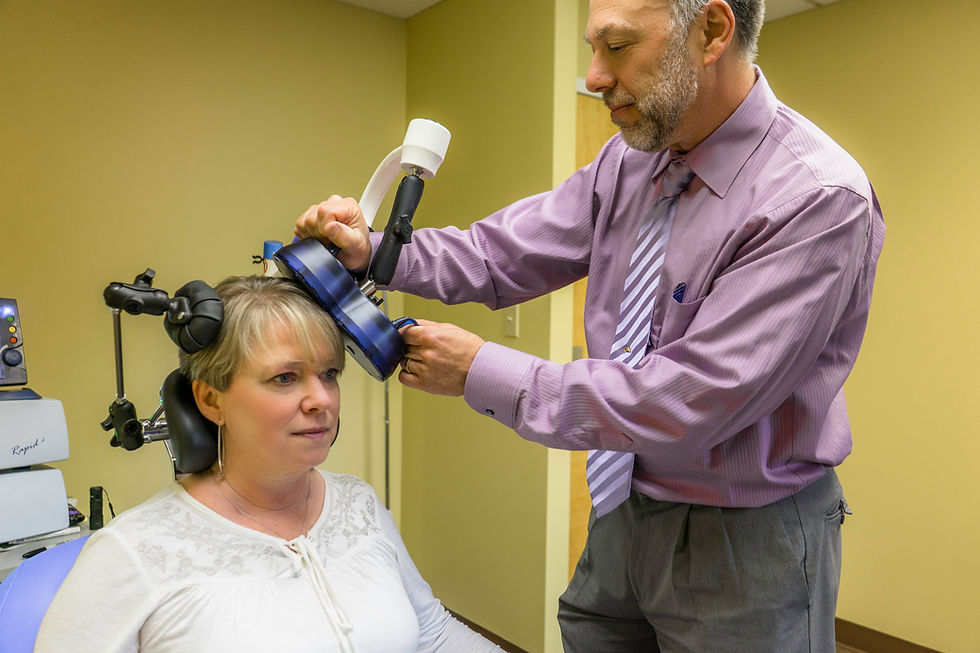You're Not Having a Heart Attack, You're Having a Panic Attack
- Dr. Gary Warstadt
- Jun 19, 2017
- 4 min read

Panic attacks can be the most terrifying of all emotional states. They are also a very common problem, with recurring attacks affecting up to 4% of the population. They involve the rapid, sudden onset of extreme fear and anxiety. They’re also associated with rapid heart rate or palpitations, rapid breathing or shortness of breath, shaking, sweating, nausea, dizziness. They can be associated with chest pain, which often frightens people into thinking they’re having a heart attack. People often feel like they are dying, are about to go crazy, or have to escape. Many wind up in the emergency room at some point. Quite a few have to severely limit their activities, and some become completely disabled.
But the panic system has an essential role to play. Panic attacks are your fight or flight system. This system exists in every animal; it’s part of self-preservation. It’s there in case the animal is attacked by a predator or finds itself in some other life-threatening situation.
At those times, you need to be breathing rapidly so there is plenty of oxygen in your blood; you need to have your heart pumping hard to get this blood out to your muscles so you can fight or run. You also want your adrenal glands to dump all their adrenaline so all your senses and reactions are turned up all the way. Adrenalin also makes us clammy, sweaty, wide-eyed and tremulous.
This is a useful and adaptive thing if you are indeed fighting for your life. Unfortunately, it’s not helpful if you’re stuck in traffic on the Southeast Expressway.
Panic attacks occur very rapidly (again, you would not want an animal to spend a lot of time getting into fight or flight mode); in fact, that is how we distinguish panic attacks from other kinds of anxiety. People can go from relatively calm to extreme anxiety in a couple of seconds.
It’s not unusual for panic attacks, particularly the first few, to occur at completely random moments. The person could be listening to their favorite song and making a tuna fish sandwich one second, and the next second feel like they’re going to die. Often this is how it all starts.
But it often doesn’t end there. What grows up around the panic attacks is the fear of having a panic attack, also known as anticipatory anxiety. This is where you become afraid of situations that have caused panic attacks in the past, locations where panic attacks have occurred, situations where it would be embarrassing to have a panic attack, or places where escape is difficult or embarrassing. Sometimes this is also called agoraphobia, from the Latin for “fear of the marketplace.”
Again, this makes sense from an evolutionary standpoint. Nature wants an animal to be very careful if it got attacked yesterday at the watering hole, and now it’s thirsty again. Nature also wants to create a rapid, powerful, and long lasting response if the same kind of situation arises. Nature does not want the animal to be sitting there saying “hmmm... stripes, claws, teeth…now, where did I see that before?” Similarly, people with panic disorder tend to avoid places where escape is difficult such as movie theaters, churches, shopping malls, elevators, highways, bridges, and tunnels. You know what happens in nature after an animal is trapped; it becomes lunch.
True panic attacks can often be distinguished by how quickly they start up; the real panic attacks tend to be very abrupt and anticipatory anxiety tends to build up over time. Sometimes people have so much anticipatory anxiety they actually trigger a panic attack. Either way you can still get to the point where you’re hyperventilating and your heart is pounding out of your chest. It’s actually important to distinguish between true panic and anticipation, because the panic attacks tend to require medication, while anticipatory anxiety is usually best dealt with using cognitive behavioral therapy (CBT).
The goal here is to completely eliminate the panic attacks if possible with one of several medications originally developed for depression. They seem to raise the threshold for triggering an attack to the point where attacks are no longer caused by non-life-threatening situations. The nice thing is that they are preventative, safe, and non-addictive medications.
Once the panic attacks are completely gone, it is then possible for you to work on un-scaring yourself, but in a gradual, confidence-building kind of way. The point of CBT is to create a series of positive experiences starting from the least scary situation and gradually working up to the most. You start with something you have been avoiding, but feel pretty confident you can do without having a panic attack. You do that over and over until you feel pretty confident you can move up to the next item on your list. Graduation day is different for different people. For some it is getting on an airplane. For others it is South Shore Plaza the day before Christmas.
A complete recovery is often though not always achievable, though many people continue to need to take medications in order to remain symptom-free. Given how awful panic attacks are, and how trouble-free the mediations often are, most people consider it a small price to pay.














































Comments